-
 Bitcoin
Bitcoin $106,782.3966
-0.72% -
 Ethereum
Ethereum $2,406.7764
-1.16% -
 Tether USDt
Tether USDt $1.0005
0.02% -
 XRP
XRP $2.0918
-1.53% -
 BNB
BNB $644.5785
-0.17% -
 Solana
Solana $141.0925
-0.69% -
 USDC
USDC $1.0000
0.02% -
 TRON
TRON $0.2721
0.18% -
 Dogecoin
Dogecoin $0.1585
-1.26% -
 Cardano
Cardano $0.5497
-1.14% -
 Hyperliquid
Hyperliquid $35.8493
-1.58% -
 Bitcoin Cash
Bitcoin Cash $502.3089
2.20% -
 Sui
Sui $2.7092
3.87% -
 Chainlink
Chainlink $12.8551
-1.85% -
 UNUS SED LEO
UNUS SED LEO $9.0548
0.53% -
 Stellar
Stellar $0.2344
-0.85% -
 Avalanche
Avalanche $17.2676
-0.23% -
 Toncoin
Toncoin $2.8282
0.56% -
 Shiba Inu
Shiba Inu $0.0...01113
-1.14% -
 Litecoin
Litecoin $83.9593
-0.93% -
 Hedera
Hedera $0.1447
0.82% -
 Monero
Monero $306.9022
-2.07% -
 Bitget Token
Bitget Token $4.6358
3.42% -
 Dai
Dai $0.9999
0.01% -
 Ethena USDe
Ethena USDe $1.0001
0.02% -
 Polkadot
Polkadot $3.3211
0.06% -
 Uniswap
Uniswap $6.8775
0.75% -
 Pi
Pi $0.5664
-0.27% -
 Aave
Aave $256.0055
1.28% -
 Pepe
Pepe $0.0...09013
-3.24%
How to scan the ETH wallet address QR code? Quick transfer tips
Scanning an ETH wallet address QR code streamlines transactions; use a smartphone camera or app, ensure good lighting, and verify the source for security.
May 13, 2025 at 02:21 am
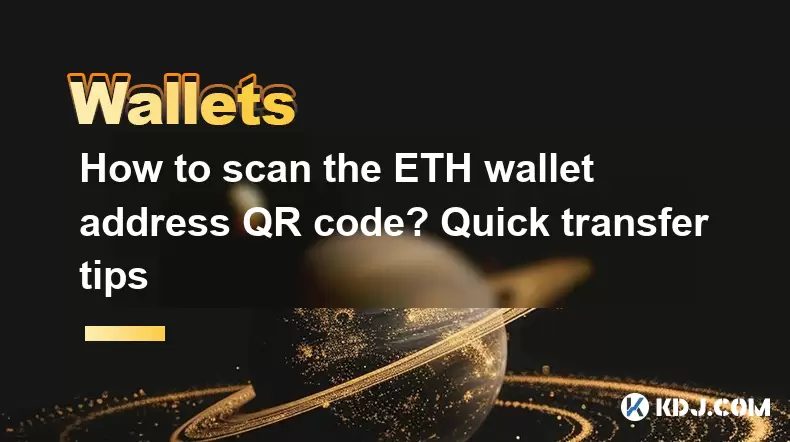
Scanning an Ethereum (ETH) wallet address QR code is a convenient and quick way to initiate transactions. Whether you're sending ETH to a friend or making a purchase, understanding how to properly scan a QR code can streamline your cryptocurrency transfers. This article will guide you through the process step-by-step and provide additional tips for quick transfers.
Understanding QR Codes in Cryptocurrency
QR codes are widely used in the cryptocurrency world to represent wallet addresses. They are essentially a two-dimensional barcode that can be scanned by a smartphone camera or a dedicated QR code scanner app. In the context of Ethereum, a QR code represents an ETH wallet address, which is a long string of alphanumeric characters that is used to send and receive ETH.
When you scan an ETH wallet address QR code, your device decodes the information and converts it into the wallet address that you can use to initiate a transaction. This method is much faster and less error-prone than manually entering the address.
Preparing to Scan an ETH Wallet Address QR Code
Before you can scan an ETH wallet address QR code, you need to ensure that you have the right tools at your disposal. Here's what you'll need:
- A smartphone with a camera: Most modern smartphones have built-in cameras that can scan QR codes.
- A QR code scanning app: While some smartphones can scan QR codes natively, using a dedicated app can enhance your scanning experience. Popular options include Google Lens, QR Code Reader, and others.
- A stable internet connection: This is necessary to process the transaction after scanning the QR code.
Step-by-Step Guide to Scanning an ETH Wallet Address QR Code
Here's how you can scan an ETH wallet address QR code and initiate a transaction:
- Open your QR code scanning app: Launch the app on your smartphone. If you're using a native scanner, you might need to access it through your camera app.
- Point your camera at the QR code: Ensure the QR code is well-lit and within the camera's frame. The app should automatically detect the QR code.
- Scan the QR code: Once the QR code is detected, the app will decode it and display the ETH wallet address.
- Copy the wallet address: Most apps will have a button to copy the address to your clipboard.
- Open your Ethereum wallet app: Navigate to the section where you can send ETH.
- Paste the wallet address: Use the "Paste" function to enter the address you copied from the QR code.
- Enter the amount of ETH to send: Specify the amount of ETH you want to transfer.
- Review the transaction details: Double-check the recipient's address and the amount to ensure everything is correct.
- Confirm and send the transaction: Once you're satisfied, confirm the transaction. Your wallet will prompt you to enter your private key or use biometric authentication to finalize the transfer.
Quick Transfer Tips for ETH
To make your ETH transfers as quick and efficient as possible, consider the following tips:
- Use a dedicated ETH wallet app: Apps like MetaMask, Trust Wallet, and Coinbase Wallet are optimized for quick transactions and often include built-in QR code scanners.
- Keep your wallet app updated: Regular updates can improve the speed and security of your transactions.
- Pre-fill transaction details: Some wallet apps allow you to save frequently used addresses and pre-fill transaction amounts, which can save time.
- Use a fast internet connection: A stable and fast internet connection can speed up the transaction process, especially when confirming the transaction on the blockchain.
Troubleshooting Common Issues
Sometimes, you might encounter issues when scanning an ETH wallet address QR code. Here are some common problems and their solutions:
- QR code not scanning: Ensure the QR code is not damaged or obscured. Try adjusting the lighting or using a different app to scan it.
- Incorrect address after scanning: This could be due to a faulty QR code or a misreading by the app. Double-check the address manually if possible.
- Transaction not processing: Ensure you have enough ETH to cover the transaction fees (gas fees) and that your internet connection is stable.
Ensuring Security When Scanning QR Codes
Security is paramount when dealing with cryptocurrencies. Here are some tips to keep your ETH transfers secure:
- Verify the QR code source: Only scan QR codes from trusted sources to avoid falling victim to phishing attacks.
- Use a secure wallet app: Choose a wallet app that has a good reputation for security and regularly updates its software.
- Enable two-factor authentication (2FA): Whenever possible, use 2FA to add an extra layer of security to your wallet.
Frequently Asked Questions
Q: Can I scan an ETH wallet address QR code with any smartphone?
A: Yes, as long as your smartphone has a camera and a QR code scanning app, you can scan an ETH wallet address QR code. Most modern smartphones come with built-in QR code scanning capabilities.
Q: What should I do if the QR code is too small to scan?
A: If the QR code is too small, try zooming in on the code with your camera or taking a photo of the QR code and then scanning the photo. Ensure the QR code is clear and not distorted.
Q: Is it safe to scan QR codes from public places?
A: It is generally not recommended to scan QR codes from public places unless you are certain of their source. Public QR codes can be tampered with and may lead to phishing sites or malicious wallets.
Q: How can I tell if a QR code has been tampered with?
A: Look for signs of physical tampering, such as stickers over the original QR code or any visible alterations. If possible, verify the QR code with the issuer before scanning it.
Disclaimer:info@kdj.com
The information provided is not trading advice. kdj.com does not assume any responsibility for any investments made based on the information provided in this article. Cryptocurrencies are highly volatile and it is highly recommended that you invest with caution after thorough research!
If you believe that the content used on this website infringes your copyright, please contact us immediately (info@kdj.com) and we will delete it promptly.
- Smart Investors Navigate the AI Token Frenzy: Bitcoin Switch and Beyond
- 2025-06-28 12:30:12
- Crypto in 2025: How Web3 AI is Poised to Dominate
- 2025-06-28 12:30:12
- Crypto 2025: Spotting the Top Coins with Real Utility
- 2025-06-28 12:42:12
- Pepe Price's Wild Ride: Cryptocurrency Milestone or Just Another Meme?
- 2025-06-28 12:42:13
- BDAG Airdrop Heats Up as ADA Dips and AVAX Eyes Gains: What's the Buzz?
- 2025-06-28 10:30:12
- Crypto, Bitcoin, Buy Now: Navigating the Bullish Breakout
- 2025-06-28 10:30:12
Related knowledge

How to stake cryptocurrencies on Coinbase? Benefits and risks
Jun 27,2025 at 06:36pm
Understanding Cryptocurrency Staking on CoinbaseStaking cryptocurrencies involves locking up digital assets to support the operations of a blockchain network, typically in return for rewards. Coinbase, one of the most popular cryptocurrency exchanges globally, offers staking services for several proof-of-stake (PoS) coins. Users can stake their holdings...
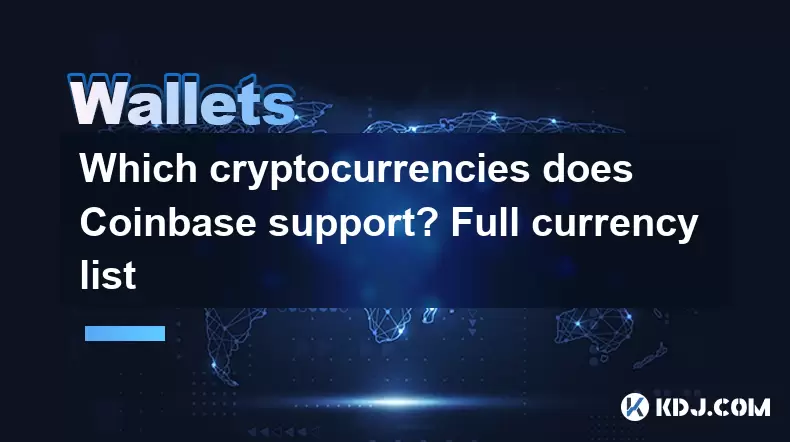
Which cryptocurrencies does Coinbase support? Full currency list
Jun 28,2025 at 08:36am
Overview of Cryptocurrencies Supported by CoinbaseCoinbase is one of the most popular and trusted cryptocurrency exchanges globally. It provides users with a platform to buy, sell, trade, and store various digital assets. As of the latest updates, Coinbase supports over 200 cryptocurrencies, including major ones like Bitcoin (BTC), Ethereum (ETH), and L...
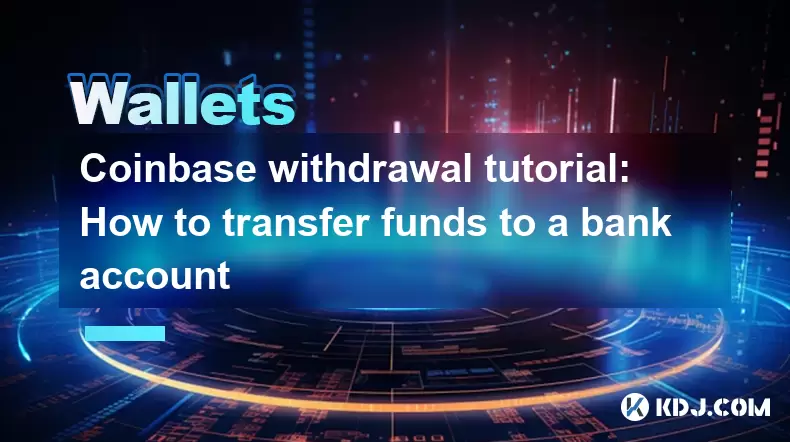
Coinbase withdrawal tutorial: How to transfer funds to a bank account
Jun 28,2025 at 02:35am
Understanding Coinbase WithdrawalsCoinbase is one of the most widely used cryptocurrency platforms, allowing users to buy, sell, and store digital assets. Once you've successfully traded or held your crypto on Coinbase, the next logical step may be to withdraw funds to a bank account. This process involves converting your cryptocurrency into fiat curren...
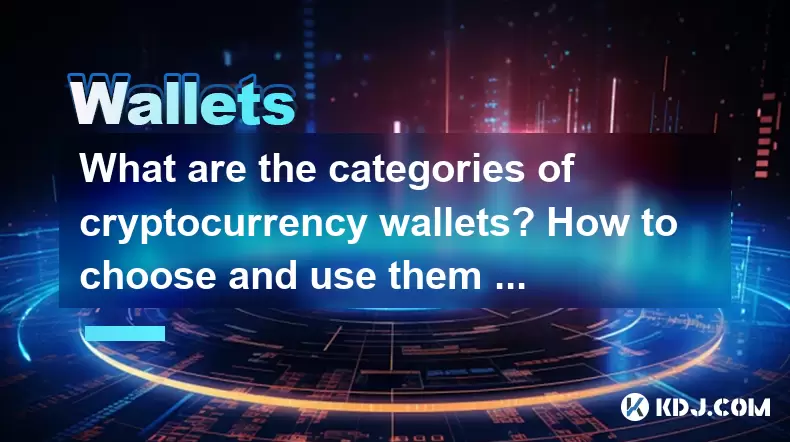
What are the categories of cryptocurrency wallets? How to choose and use them safely?
Jun 21,2025 at 10:42pm
Understanding Cryptocurrency WalletsCryptocurrency wallets are essential tools for anyone involved in the digital asset ecosystem. They allow users to store, send, and receive cryptocurrencies securely. Unlike traditional wallets that hold physical money, crypto wallets manage cryptographic keys—private and public—which interact with blockchain networks...
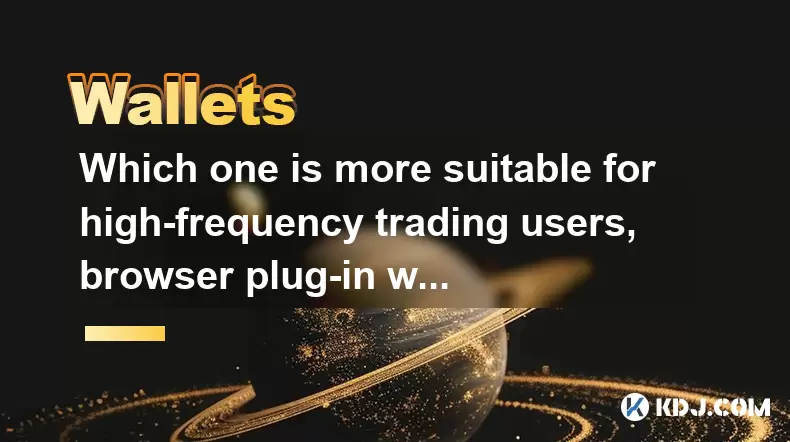
Which one is more suitable for high-frequency trading users, browser plug-in wallets or independent application wallets?
Jun 23,2025 at 08:22am
Understanding the Role of Wallets in High-Frequency TradingFor high-frequency trading (HFT) users in the cryptocurrency market, wallet selection is critical due to the need for speed, security, and seamless integration with trading platforms. HFT involves executing a large number of trades within seconds or even milliseconds, which demands a wallet that...

What are the differences between the operating mechanisms of on-chain wallets and off-chain wallets? Is there a big difference in transaction fees?
Jun 25,2025 at 08:49am
Understanding On-Chain WalletsOn-chain wallets are digital wallets that directly interact with the blockchain network. These wallets store users' private keys, which are essential for signing and authorizing transactions on the blockchain. When using an on-chain wallet, every transaction must be recorded and verified by the decentralized nodes in the ne...

How to stake cryptocurrencies on Coinbase? Benefits and risks
Jun 27,2025 at 06:36pm
Understanding Cryptocurrency Staking on CoinbaseStaking cryptocurrencies involves locking up digital assets to support the operations of a blockchain network, typically in return for rewards. Coinbase, one of the most popular cryptocurrency exchanges globally, offers staking services for several proof-of-stake (PoS) coins. Users can stake their holdings...

Which cryptocurrencies does Coinbase support? Full currency list
Jun 28,2025 at 08:36am
Overview of Cryptocurrencies Supported by CoinbaseCoinbase is one of the most popular and trusted cryptocurrency exchanges globally. It provides users with a platform to buy, sell, trade, and store various digital assets. As of the latest updates, Coinbase supports over 200 cryptocurrencies, including major ones like Bitcoin (BTC), Ethereum (ETH), and L...

Coinbase withdrawal tutorial: How to transfer funds to a bank account
Jun 28,2025 at 02:35am
Understanding Coinbase WithdrawalsCoinbase is one of the most widely used cryptocurrency platforms, allowing users to buy, sell, and store digital assets. Once you've successfully traded or held your crypto on Coinbase, the next logical step may be to withdraw funds to a bank account. This process involves converting your cryptocurrency into fiat curren...

What are the categories of cryptocurrency wallets? How to choose and use them safely?
Jun 21,2025 at 10:42pm
Understanding Cryptocurrency WalletsCryptocurrency wallets are essential tools for anyone involved in the digital asset ecosystem. They allow users to store, send, and receive cryptocurrencies securely. Unlike traditional wallets that hold physical money, crypto wallets manage cryptographic keys—private and public—which interact with blockchain networks...

Which one is more suitable for high-frequency trading users, browser plug-in wallets or independent application wallets?
Jun 23,2025 at 08:22am
Understanding the Role of Wallets in High-Frequency TradingFor high-frequency trading (HFT) users in the cryptocurrency market, wallet selection is critical due to the need for speed, security, and seamless integration with trading platforms. HFT involves executing a large number of trades within seconds or even milliseconds, which demands a wallet that...

What are the differences between the operating mechanisms of on-chain wallets and off-chain wallets? Is there a big difference in transaction fees?
Jun 25,2025 at 08:49am
Understanding On-Chain WalletsOn-chain wallets are digital wallets that directly interact with the blockchain network. These wallets store users' private keys, which are essential for signing and authorizing transactions on the blockchain. When using an on-chain wallet, every transaction must be recorded and verified by the decentralized nodes in the ne...
See all articles























































































